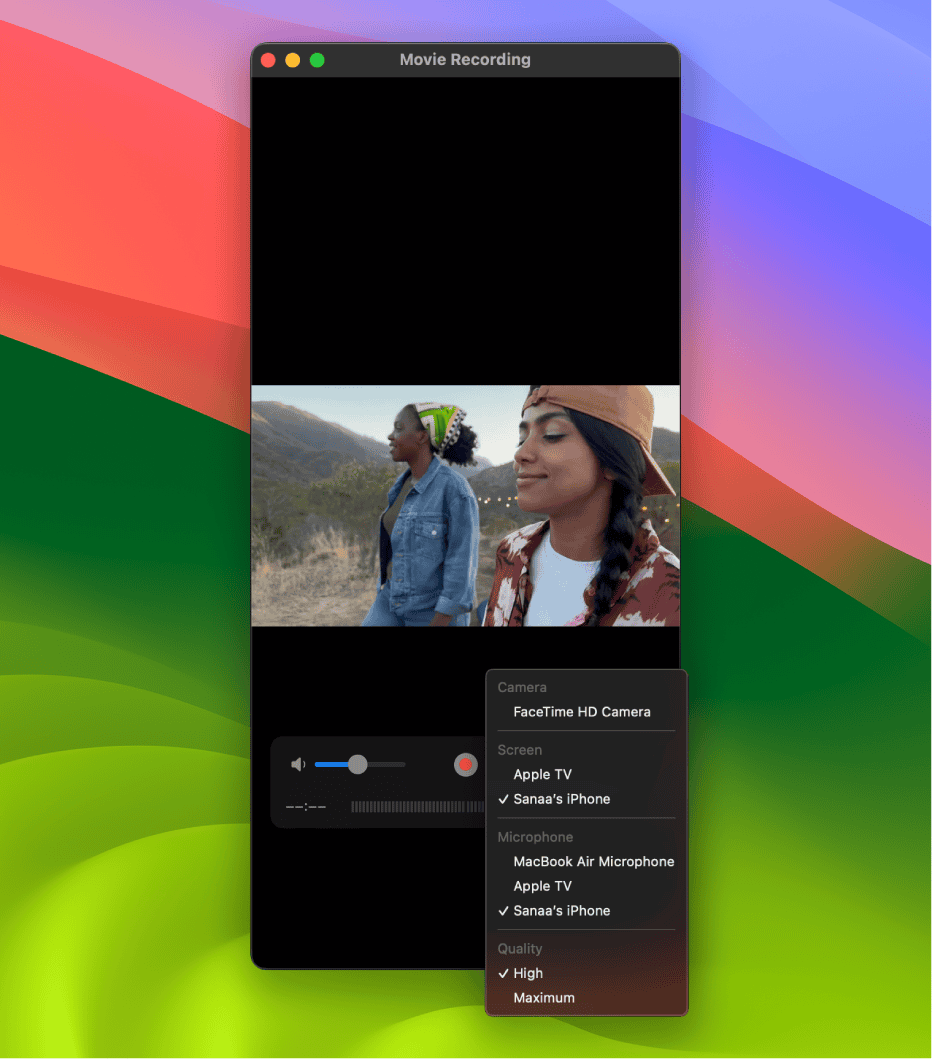QuickTime Player, once a staple for Windows users, has become a tricky topic. Many struggle to find a version that works on modern Windows systems. The last official QuickTime release for Windows was version 7.7.9, compatible with Windows Vista and 7.
Apple no longer supports QuickTime for Windows. This leaves users seeking ways to play certain media formats. Some have found success installing older versions or using compatibility mode. Others look for alternative players that support QuickTime file types.
You might wonder if you need QuickTime at all. Many media formats once reliant on QuickTime now play in standard Windows apps. But for specific files or workflows, you may still want access to this player. Let’s explore your options:
| QuickTime Version | Windows Compatibility | Apple Support Status |
|---|---|---|
| 7.7.9 | Vista, 7 | No longer supported |
| 7.6 | Older versions | No longer supported |
| Alternative players | Windows 10, 11 | Varies by software |
QuickTime Player on Windows: Why It’s Gone and What to Use Instead
QuickTime Player was once a popular media player for Windows. However, Apple discontinued support for it in 2016. This means there are no more security updates for QuickTime Player on Windows. This leaves your computer vulnerable to malware.
Why Did Apple Discontinue QuickTime Player for Windows?
Apple likely discontinued QuickTime Player for Windows for several reasons:
- Security Concerns: Without security updates, QuickTime Player became a potential target for hackers.
- Focus on Apple Ecosystem: Apple likely wanted to focus its resources on its own operating system and devices.
- Low Usage: The usage of QuickTime Player on Windows might have been declining, making it less of a priority for Apple.
What to Use Instead of QuickTime Player on Windows
There are many great alternatives to QuickTime Player available for Windows. Some popular options include:
- VLC Media Player: This is a free and open-source media player that can play almost any video or audio format.
- Windows Media Player: This is a built-in media player for Windows that can play many popular formats.
- PotPlayer: This is a free media player with a wide range of features, including support for 3D video and 360-degree video.
- Media Player Classic – Home Cinema (MPC-HC): This is a lightweight and open-source media player that is known for its simplicity and efficiency.
Here’s a table summarizing the pros and cons of each alternative:
| Media Player | Pros | Cons |
|---|---|---|
| VLC Media Player | Free, open-source, plays almost any format, cross-platform | Interface may seem outdated to some users |
| Windows Media Player | Built-in, easy to use | Limited format support |
| PotPlayer | Free, many features, supports 3D and 360-degree video | Can be resource-intensive |
| Media Player Classic – Home Cinema | Free, open-source, lightweight, efficient | Fewer features than some other players |
How to Uninstall QuickTime Player from Windows
If you still have QuickTime Player installed on your Windows computer, you should uninstall it. Here’s how:
- Open the Control Panel: You can find the Control Panel by searching for it in the Start Menu.
- Go to “Programs and Features”: Click on “Uninstall a program” under the “Programs” category.
- Select QuickTime: Find QuickTime in the list of installed programs and click on it.
- Click “Uninstall”: Follow the on-screen instructions to uninstall QuickTime Player.
Staying Safe Online
It’s important to be aware of the risks of using outdated software. Outdated software can have security vulnerabilities that can be exploited by hackers. This can lead to malware infections, data theft, and other problems.
Here are some tips for staying safe online:
- Keep your software up to date: Make sure you install the latest security updates for your operating system and all your software.
- Use antivirus software: Antivirus software can help protect your computer from malware.
- Be careful what you download: Only download files from trusted sources.
- Use strong passwords: Use strong, unique passwords for all your online accounts.
- Be wary of phishing scams: Be careful of emails or messages that ask for your personal information.
History and Compatibility
QuickTime for Windows has a complex history of support and compatibility across various Windows versions. Its journey spans from widespread use to eventual discontinuation.
Legacy Support for Older Windows Versions
QuickTime 7 was the last major release for Windows. It supported Windows Vista and Windows 7. These older Windows versions benefited from QuickTime’s media playback capabilities.
Windows XP users could also run QuickTime 7. This ensured broad compatibility across popular Windows platforms of the time. QuickTime’s versatility made it a go-to choice for playing various media formats.
Apple regularly updated QuickTime 7 to address security issues. The final version, QuickTime 7.7.9, aimed to patch vulnerabilities. This helped protect users on older Windows systems.
Compatibility with Latest Windows Editions
QuickTime’s compatibility with newer Windows versions became limited. Apple stopped developing QuickTime for Windows after version 7.7.9. This decision affected Windows 10 users.
Windows 10 doesn’t officially support QuickTime. Installing it may lead to stability or security issues. Microsoft advises against using QuickTime on Windows 10 due to potential risks.
Windows 11 similarly lacks official QuickTime support. Users are encouraged to find alternative media players. VLC and Windows Media Player often serve as replacements.
| Windows Version | QuickTime Compatibility |
|---|---|
| Windows XP/Vista/7 | Compatible (QuickTime 7) |
| Windows 10 | Not officially supported |
| Windows 11 | Not compatible |
QuickTime’s absence on newer Windows versions stems from security concerns. Apple no longer provides updates or patches for the Windows version.
Installation Process
Installing QuickTime for Windows involves downloading the software, running the installation file, and navigating security prompts. The process is straightforward but requires attention to detail.
Downloading QuickTime for Windows
To begin, visit the official QuickTime download page on Apple’s website. Look for the “Download QuickTime 7.7.9 for Windows” link. Click on it to start the download. The file size is relatively small, so it shouldn’t take long on most internet connections.
Make sure you’re downloading from Apple’s official site to avoid potential security risks. Some third-party websites may offer QuickTime downloads, but these could contain malware.
Running the Installation File
Once the download completes, locate the installation file in your Downloads folder. It’s typically named “QuickTimeInstaller.exe”. Double-click the file to start the installation process.
You’ll see a setup wizard appear. Follow these steps:
- Choose your language
- Accept the license agreement
- Select installation type (typical or custom)
- Choose installation location
The wizard will guide you through each step. Most users can select the typical installation option for a standard setup.
Navigating User Account Control
Windows’ User Account Control (UAC) may prompt you for permission to make changes to your computer. This is a normal security measure. When the UAC dialog appears:
- Read the prompt carefully
- Verify that the program name is “QuickTime 7 Installer”
- Click “Yes” to allow the installation to proceed
If you’re not an administrator on your computer, you may need to enter an admin password at this point.
After granting permission, the installation will complete automatically. You’ll see a progress bar during this process. Once finished, QuickTime will be ready to use on your Windows system.
| Installation Step | Estimated Time | User Action Required |
|---|---|---|
| Download | 1-5 minutes | Yes |
| Run Installer | 2-3 minutes | Yes |
| UAC Prompt | < 1 minute | Yes |
| Final Installation | 3-5 minutes | No |
Supported Formats and Usage
QuickTime Player for Windows supports various media formats and offers straightforward video playback. It handles common audio and video file types while providing a user-friendly interface for watching clips.
Media Formats Compatible with QuickTime
QuickTime Player works with several popular media formats. It plays MOV files, which are QuickTime’s native format. The player also supports MP4 videos, a widely used format for online streaming.
For audio, QuickTime handles AAC and MP3 files. These formats are common for music and podcasts. The player can open AIFF and WAV files too, which are often used for uncompressed audio.
| Video Formats | Audio Formats |
|---|---|
| MOV | AAC |
| MP4 | MP3 |
| AVI | AIFF |
| WAV |
QuickTime also supports H.264 video encoding, a standard for high-quality video compression. This allows you to play many online videos without additional software.
Playing Video Files and Clips
To play a video in QuickTime, simply double-click the file or drag it into the player window. The interface is clean, with basic controls for play, pause, and volume adjustment.
You can easily skip through videos using the timeline at the bottom of the window. Click anywhere on the timeline to jump to that point in the video. For precise control, use the arrow keys to move frame by frame.
QuickTime allows you to create simple edits. You can trim videos by setting start and end points. This feature is useful for cutting out unwanted sections of clips.
The player offers fullscreen mode for immersive viewing. Press the fullscreen button or use the keyboard shortcut to expand the video. You can also resize the window to your preferred dimensions.
Alternatives to QuickTime Player
QuickTime Player isn’t available for Windows anymore. But you have many options to play media files on your PC. These include built-in Windows programs and third-party software that offer similar or better features.
Native Windows Solutions
Windows Media Player comes pre-installed on most Windows PCs. It plays common audio and video formats like MP3, WMA, and MP4. You can use it to create playlists and burn CDs. For Windows 10 and 11, Microsoft offers a newer app called Movies & TV. This app handles more file types and has a cleaner interface.
Both apps are easy to use. They integrate well with your Windows system. But they may not support all file formats you encounter.
Third-Party Media Players
VLC Media Player is a popular free option. It plays almost any file type without extra codecs. VLC offers features like video effects and subtitle support.
Media Player Classic is another lightweight choice. It has a simple interface but powerful playback options. You can customize it with plug-ins for added functionality.
Other options include PotPlayer and KMPlayer. These players offer advanced features for power users.
| Player | Key Features | File Support |
|---|---|---|
| VLC | Free, wide format support | Excellent |
| MPC-HC | Lightweight, customizable | Very good |
| PotPlayer | Advanced features | Excellent |
| KMPlayer | Built-in codecs | Very good |
Choose based on your needs. VLC works for most users. But try others if you want specific features.
Frequently Asked Questions
QuickTime Player for Windows has undergone changes in recent years. Users often have questions about compatibility and alternatives.
How can I download QuickTime Player for Windows 10?
QuickTime Player 7.7.9 is the last version available for Windows. You can download it from Apple’s support website. Double-click the installation file after downloading to begin setup.
Is there a version of QuickTime Player for Windows 10 that supports 64-bit systems?
No 64-bit version of QuickTime Player exists for Windows 10. The 32-bit version can run on 64-bit systems but may have limitations.
Does QuickTime Player support Windows 11?
QuickTime Player is not officially supported on Windows 11. You may be able to install it, but functionality is not guaranteed.
Can QuickTime Player still be installed on Windows 7?
Yes, QuickTime Player 7.7.9 can be installed on Windows 7. However, using outdated operating systems poses security risks.
What alternatives are available to QuickTime Player for Windows users?
VLC Media Player is a popular free alternative. It supports many file formats including MOV files.
Other options include:
- Windows Media Player (built-in)
- PotPlayer
- Media Player Classic
Where can Windows users find official support for QuickTime Player?
Apple no longer provides support for QuickTime on Windows. The software is considered obsolete and potentially unsafe to use.
| Feature | QuickTime Player | VLC Media Player |
|---|---|---|
| Windows Support | Limited | Full |
| File Formats | Limited | Extensive |
| Updates | No | Regular |
| Cost | Free | Free |
| Open Source | No | Yes |







